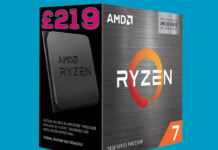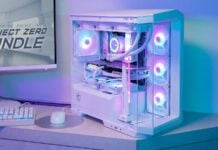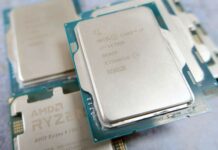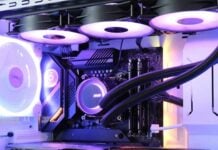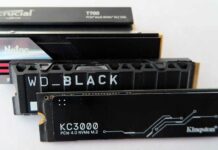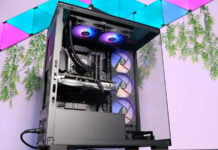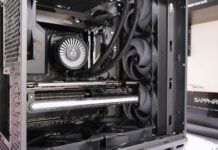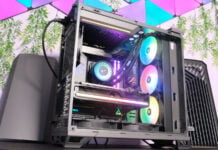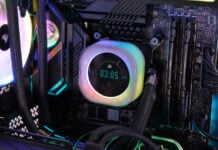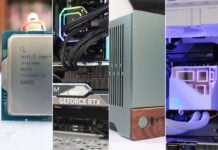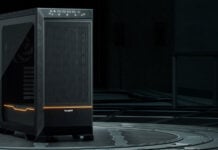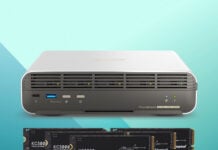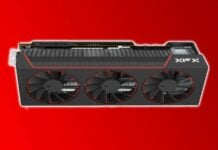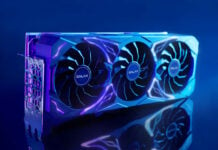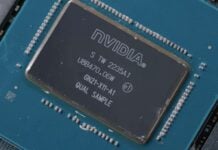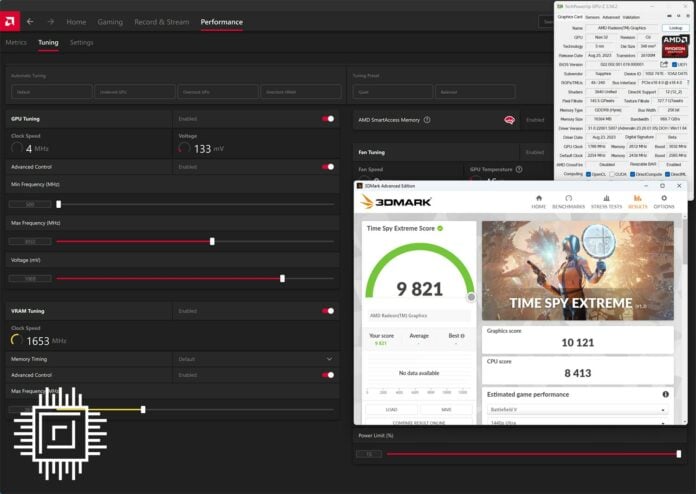
It is often said that overclocking is an outdated pastime that has been superseded by newer technologies geared toward raising performance without taking a toll on the ‘leccy bill.
That’s all well and good, but die-hard enthusiasts will always want to tinker, and every now and then, there’s a new part that fits the bill with good headroom and willingness to go beyond default specifications.
Club386 testing shows Radeon RX 7800 XT fits the mould of a GPU with genuine overclocking potential. It should be noted that results can fluctuate from one sample to the next, so your mileage may vary, yet our initial findings on a lush Sapphire Nitro+ are encouraging to say the least.
A few things to note. As is typically the case with RDNA 3, the easiest way to overclock is to actually reduce voltage – we dropped from the default 1.15V to 1.069V – and then increase power target and frequencies manually. Having an extra 15 per cent power on tap is useful insofar as it lets the card breathe, while the lower voltage inhibits throttling.
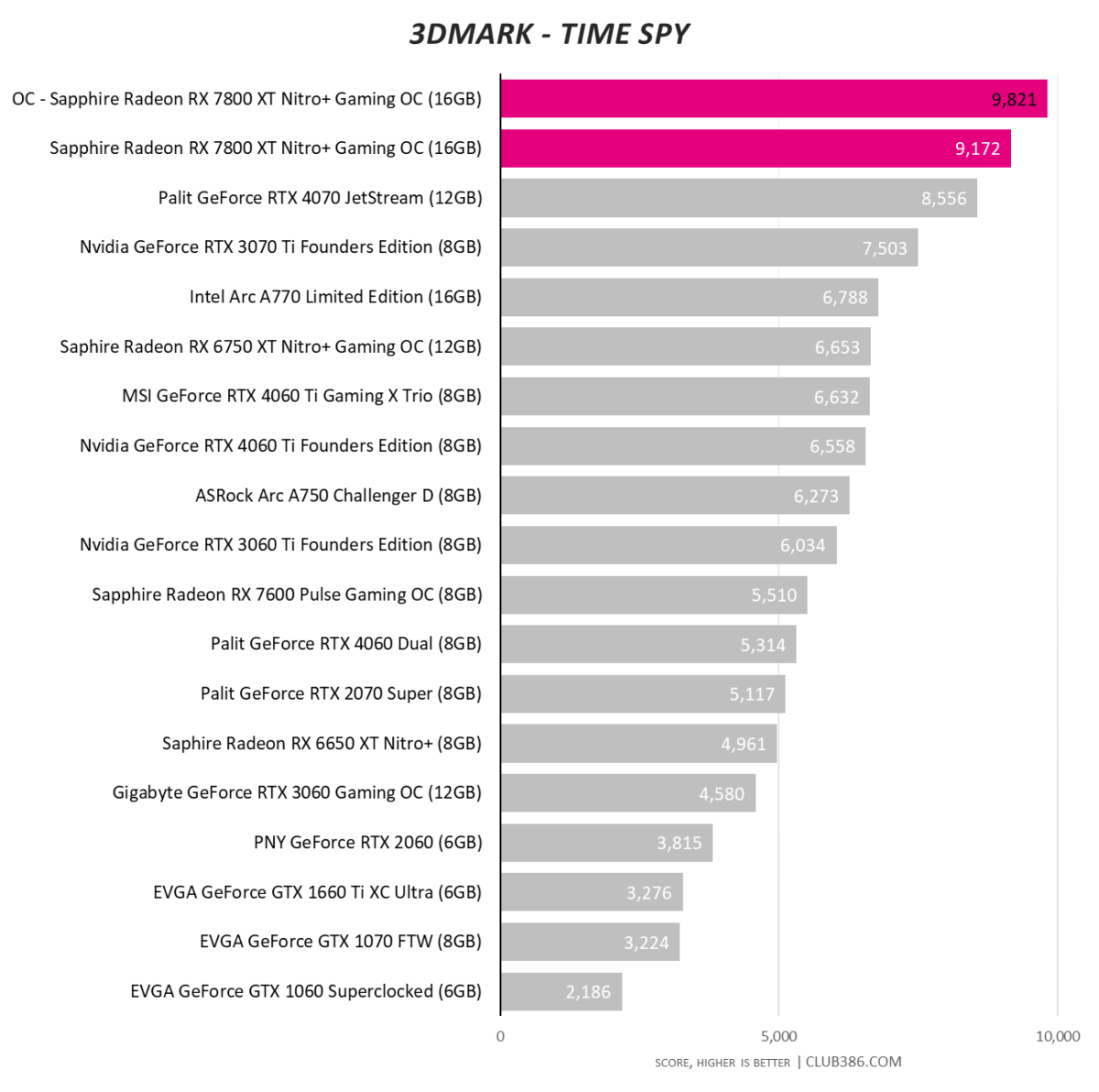
The overclocking process takes but a moment, yet rewards can be substantial. In synthetic 3DMark, we witness a healthy performance boost of seven per cent. With a little extra massaging, we’re adamant the 10k barrier can be breached quite easily, especially with a quicker CPU at the helm.
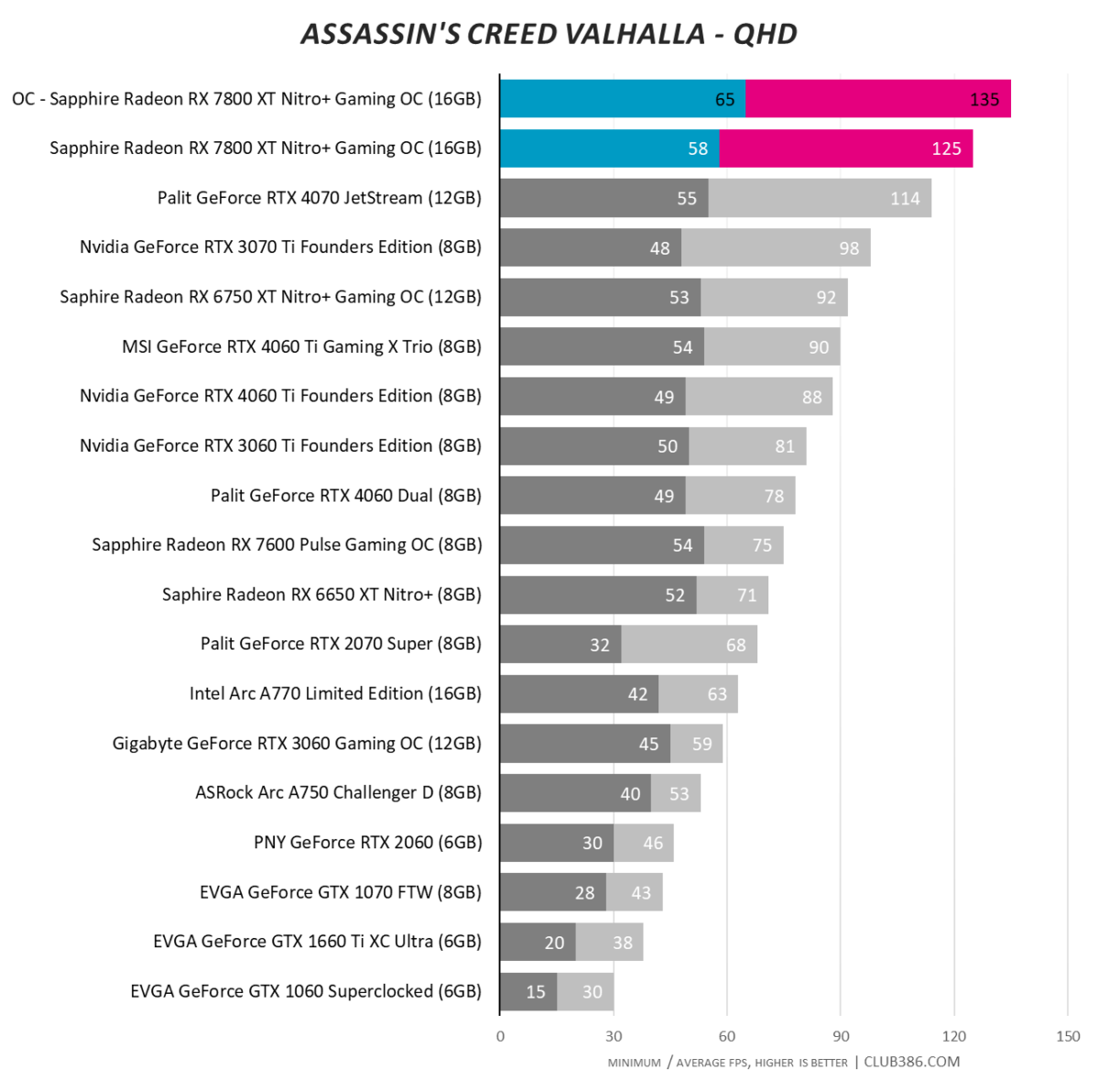
Is it worth overclocking a card you’ll be using for all your gaming needs? The Sapphire model didn’t become flustered during our benchmarks – such an extremely well-built cooler is begging to be pushed – and in-game performance boosts are noticeable. In particular, minimum frames per second rose 12 per cent in Assassin’s Creed Valhalla at a QHD resolution, creeping past the desired 60fps baseline.
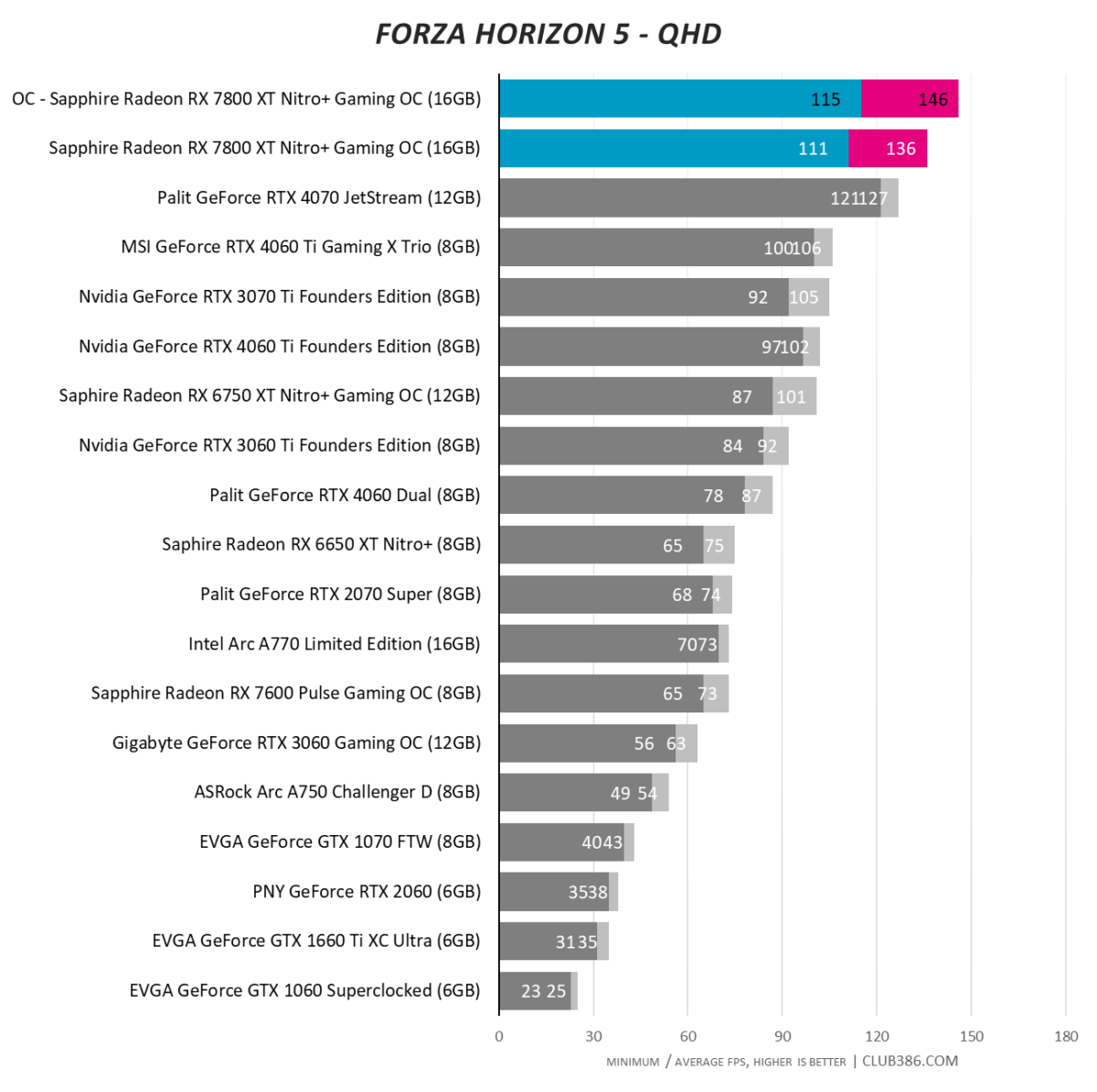
Given the upturn in performance when manually overclocking, one has to wonder if AMD is struggling to achieve an optimal V/F curve out of the box.
It’s well worth investigating if maximum framerate is the name of the game, as an extra 10 per cent or so could be waiting to be unearthed. What are the downsides? System-wide power consumption peaked at 430W – up from 396W at stock – but other than that, stability remained rock solid during use.
We don’t expect overclocking to make a comeback anytime soon – die shrinks and manufacturing complexities aren’t favourable for such activities – yet Radeon RX 7800 XT does provide a window of opportunity for those who enjoy turning the dial up to 11.









